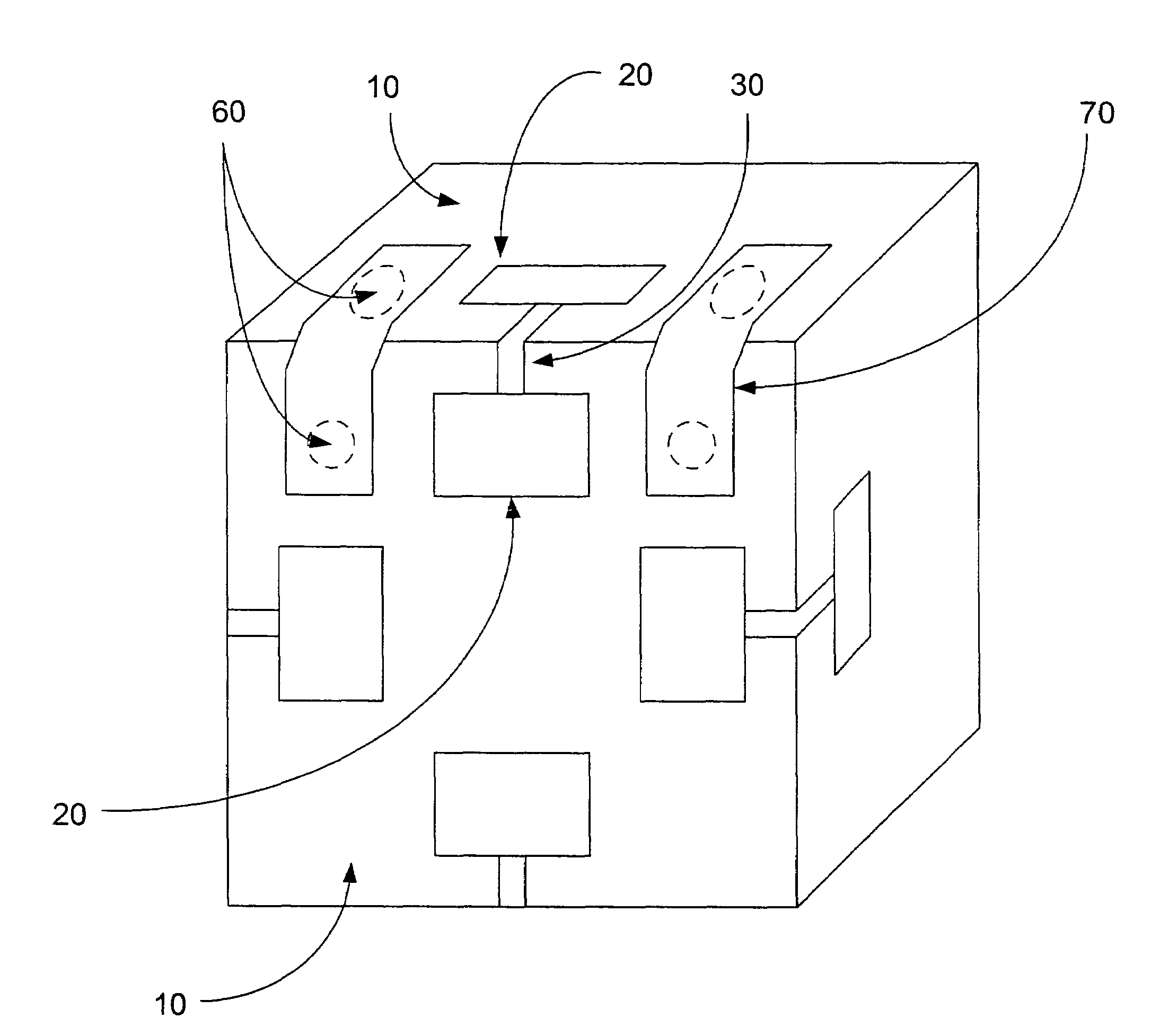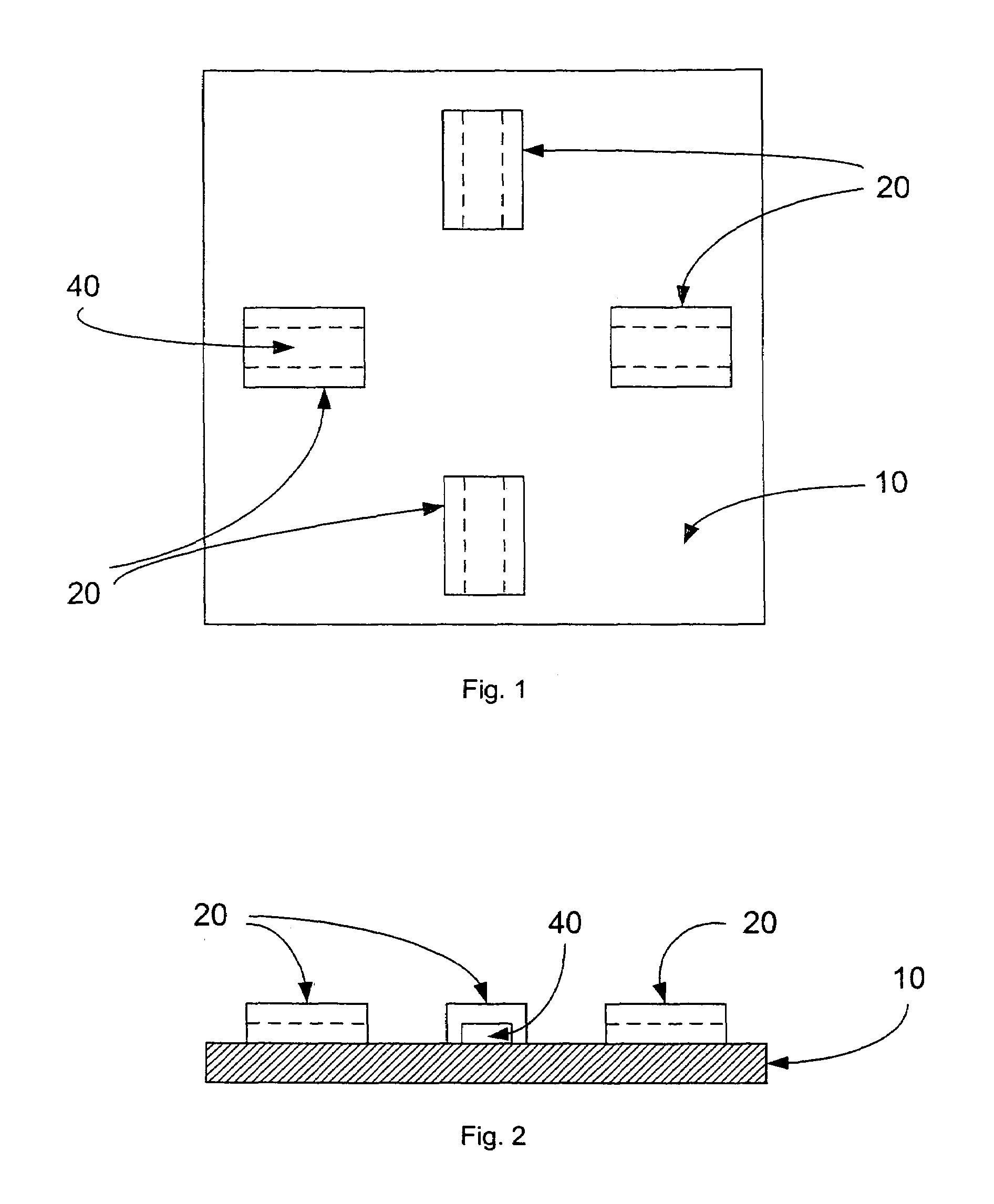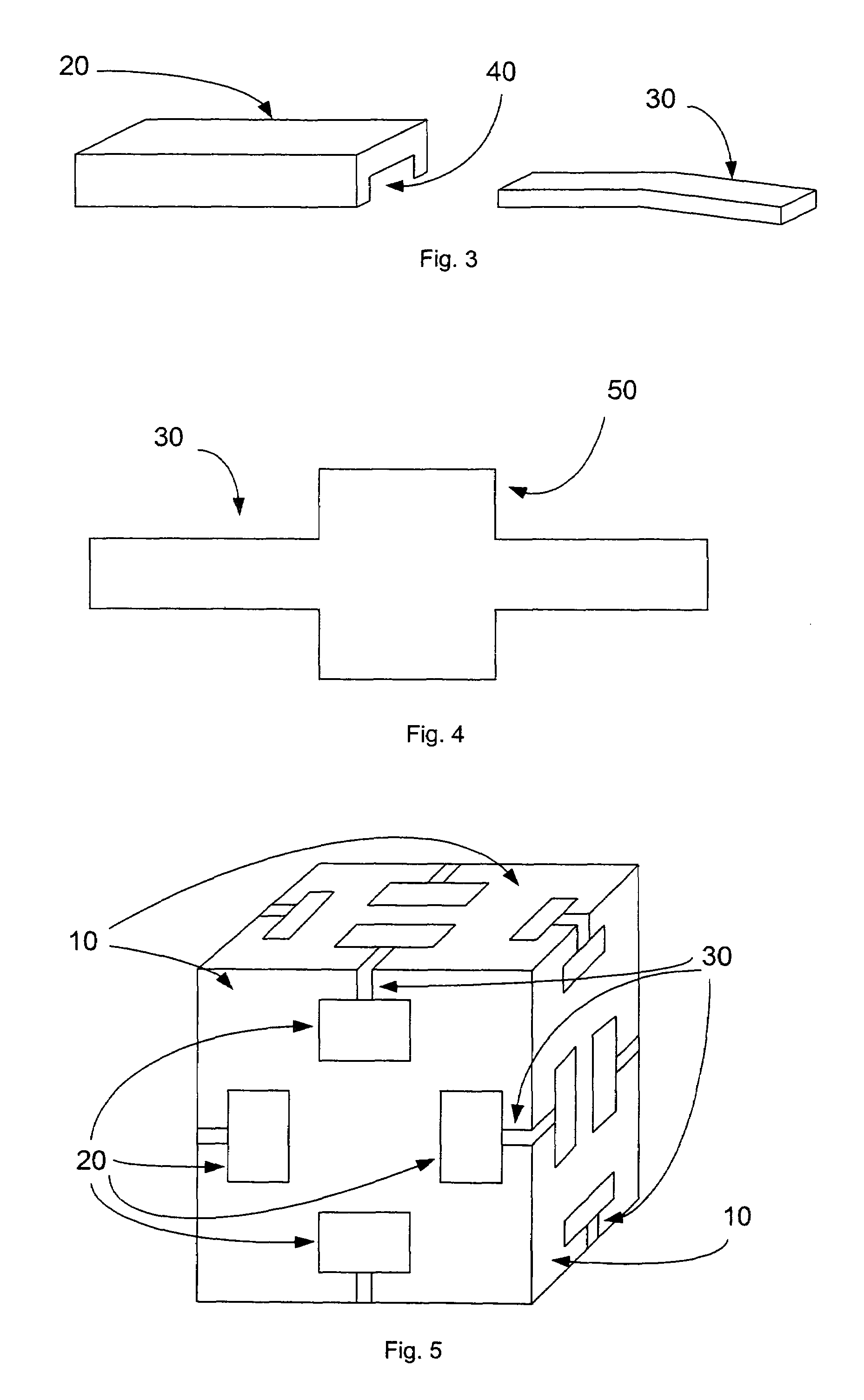Joining mechanism for lightweight applications
a technology of joining mechanism and lightweight, applied in the direction of rod connection, coupling, instruments, etc., can solve the problems of insufficient holding of joined pieces firmly in place, prior art providing nothing satisfactory, etc., and achieve the effect of facilitating construction
- Summary
- Abstract
- Description
- Claims
- Application Information
AI Technical Summary
Benefits of technology
Problems solved by technology
Method used
Image
Examples
Embodiment Construction
[0142]FIG. 1 is a top view of a regular polygon equipped with a joining mechanism at the center of each side. Although for simplicity a square has been depicted, any regular polygonal-shaped planar polygonal member (in particular, triangles, squares, pentagons, hexagons, octagons, and decagons) can serve as Object 10. Indeed, Object 10 need not be a regular polygon at all. Any shape that is to be joined to another shape can comprise Object 10. U-shaped channel member 20 exists solely to form a slot by bounding Channel 40 by Object 10. The slot thus formed is intended to accept resilient joining Tab 30 (pictured in FIG. 3). To create slots for Tabs 30, U-shaped channels 20 are installed perpendicular to one or more sides of regular polygons that will be building blocks for Platonic and Archimedean polyhedra. U-shaped channels 20 are additionally located at the midpoint of a side and slightly inset from the edge in order to accommodate a pre-formed angle in Tab 30. Note that U-shaped ...
PUM
 Login to View More
Login to View More Abstract
Description
Claims
Application Information
 Login to View More
Login to View More - R&D
- Intellectual Property
- Life Sciences
- Materials
- Tech Scout
- Unparalleled Data Quality
- Higher Quality Content
- 60% Fewer Hallucinations
Browse by: Latest US Patents, China's latest patents, Technical Efficacy Thesaurus, Application Domain, Technology Topic, Popular Technical Reports.
© 2025 PatSnap. All rights reserved.Legal|Privacy policy|Modern Slavery Act Transparency Statement|Sitemap|About US| Contact US: help@patsnap.com



